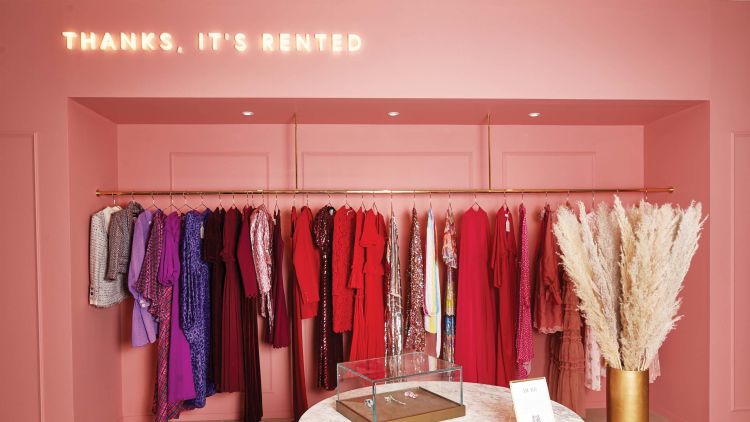The fashion industry has long been touted to play a rather large role in the climate change our planet is facing today. Research by McKinsey and the United Nations Environment Program (UNEP) states that the fashion industry was responsible for 2.1 billion metric tons of greenhouse gas emissions in 2018 and currently accounts for up to 2-8% of the global total emissions each year. Shocking statistics like these have caused a consumers to make more conscious fashion choices in order to reduce their overall clothing consumption and carbon footprint which includes buying from sustainable brands like Pangaia and making the most wears out of those clothes. Another notable choice consumers are making is turning to using clothing rental services instead buying clothes in the first place.

HURR Pop-Up for rental clothes
The idea of renting clothes is growing more popular within the Gen Z community and it is growing for the right reason. A study by the Washington State University which surveyed 362 Gen Z adults shows that most of them do want to wear the latest fashions but do not feel the need to own the product to do so; they are solely focused on using the product and believe clothing rental services will increase the life span of the clothing as multiple people would rent it at different times. This also correlates to rule #4 in “The 20 New Rules of Green Marketing” which states that consumers don’t need to own products and their needs can be rather met by services as they get the same utility – perhaps even more as renting does not make a item’s utility diminish making it more sustainable.
With so many rental options available being fashionable and sustainable has never been easier, but how sustainable are rental services truly? This refers to the hidden environmental costs that come with renting clothes. Renting clothes still has significant greenhouse gas emissions due to the frequent transportation required to receive/send back the rentals and the use of harsh cleaning chemical by the rental services to keep the items looking fresh between rentals.
Due to these negative externalities, we find ourselves at two ends of a double-edged sword where, on one hand, renting clothes will help us reduce overconsumption and thereby waste of clothes and on the other, we still might be harming the environment (a little less than before but nonetheless). Perhaps rental services can explore new rental options such as peer-to-peer which means that they renters will rent used pieces from individuals and not new pieces from stores? Or use sustainable delivery methods such as electric cars or RePack packaging?
Sources
https://unece.org/forestry/press/un-alliance-aims-put-fashion-path-sustainability
https://www.mckinsey.com/industries/retail/our-insights/fashion-on-climate
https://www.sciencedaily.com/releases/2021/08/210811131554.htm